
LOADING ...
In response to evolving domestic opinion, eMedals Inc has made the conscious decision to remove the presentation of German Third Reich historical artifacts from our online catalogue. For three decades, eMedals Inc has made an effort to preserve history in all its forms. As historians and researchers, we have managed sensitive articles and materials with the greatest of care and respect for their past and present social context. We acknowledge the growing sentiments put forth by the Canadian public and have taken proactive actions to address this opinion.
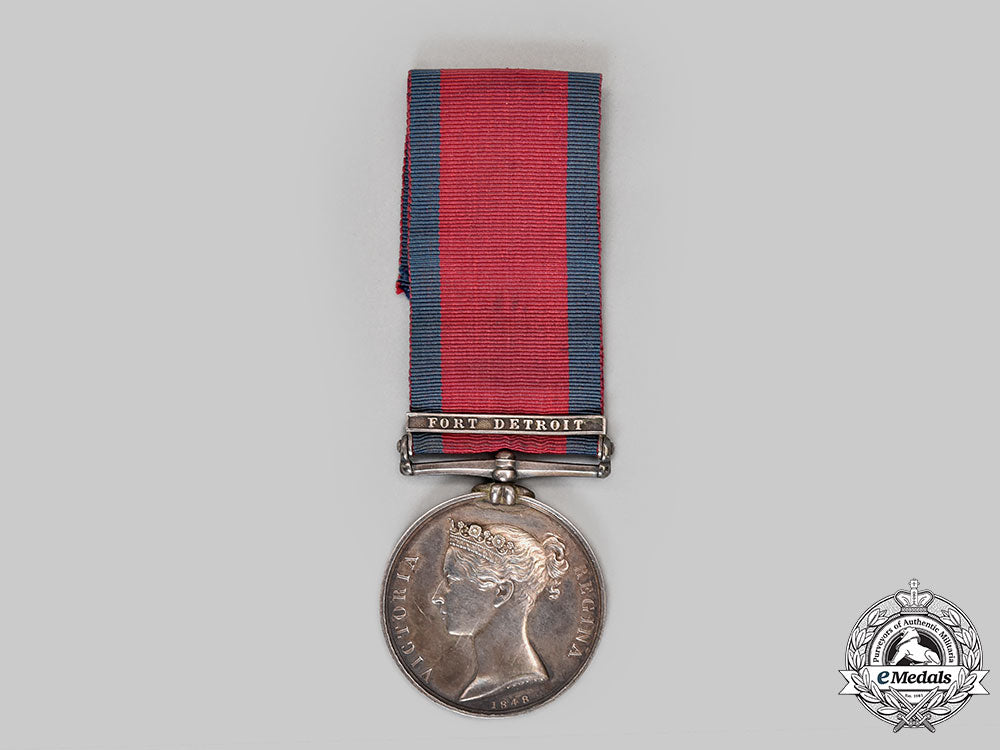
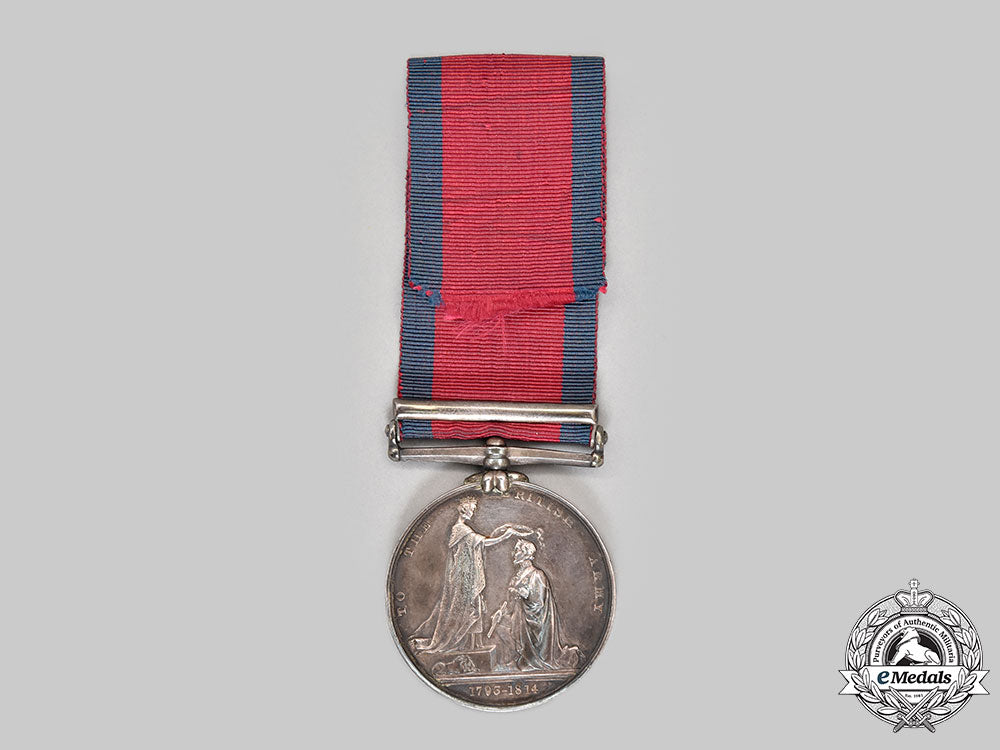
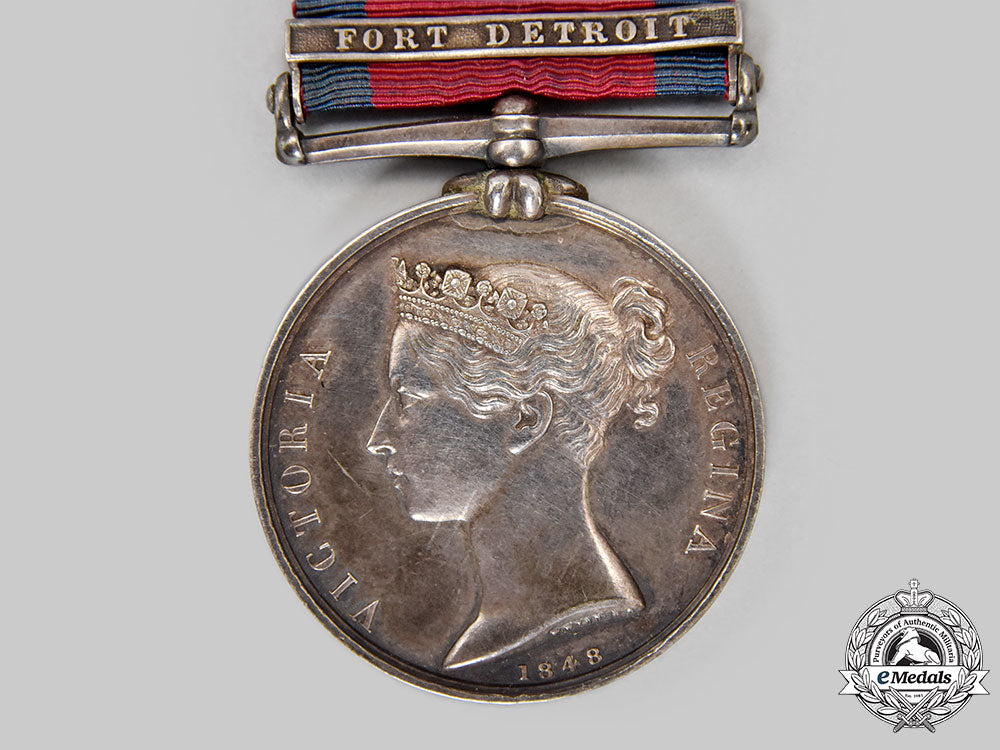
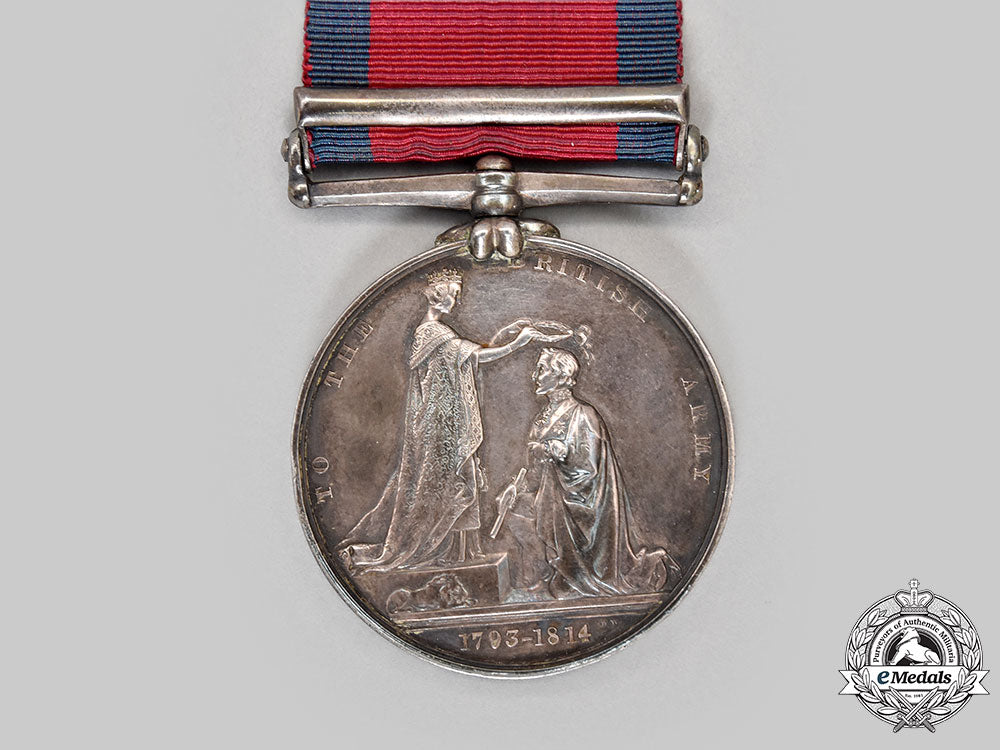
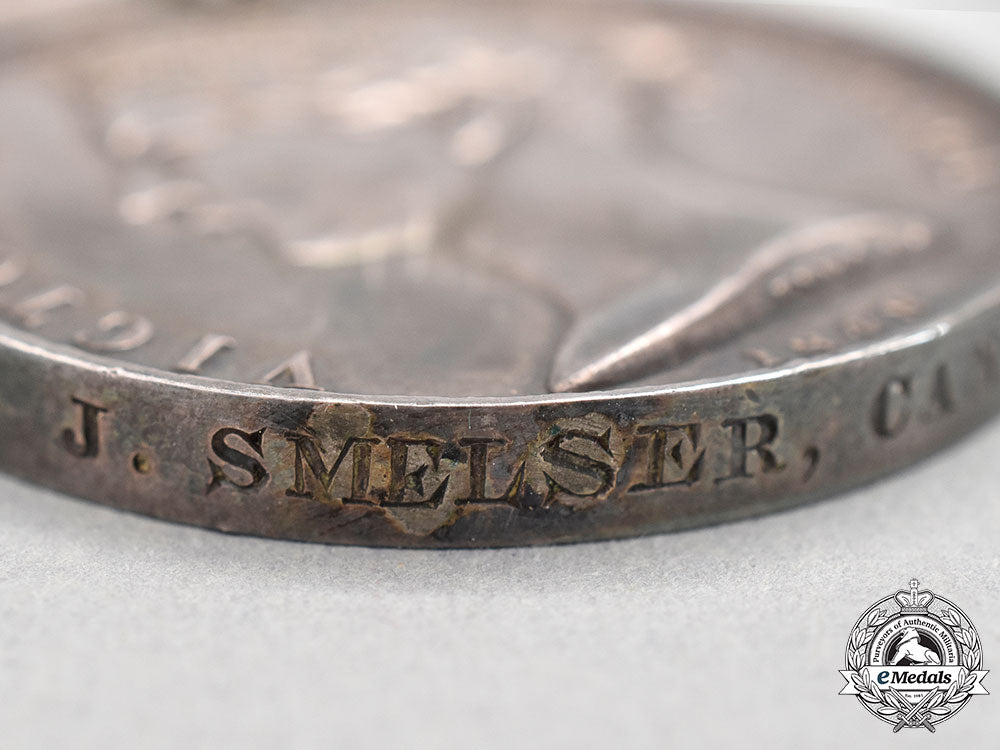
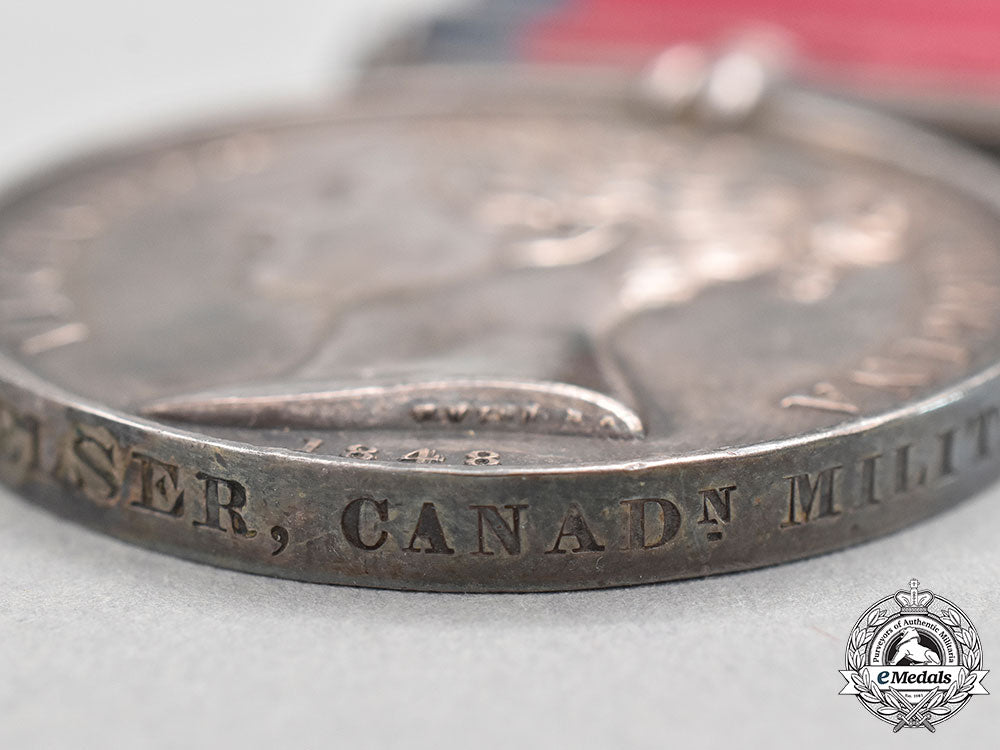
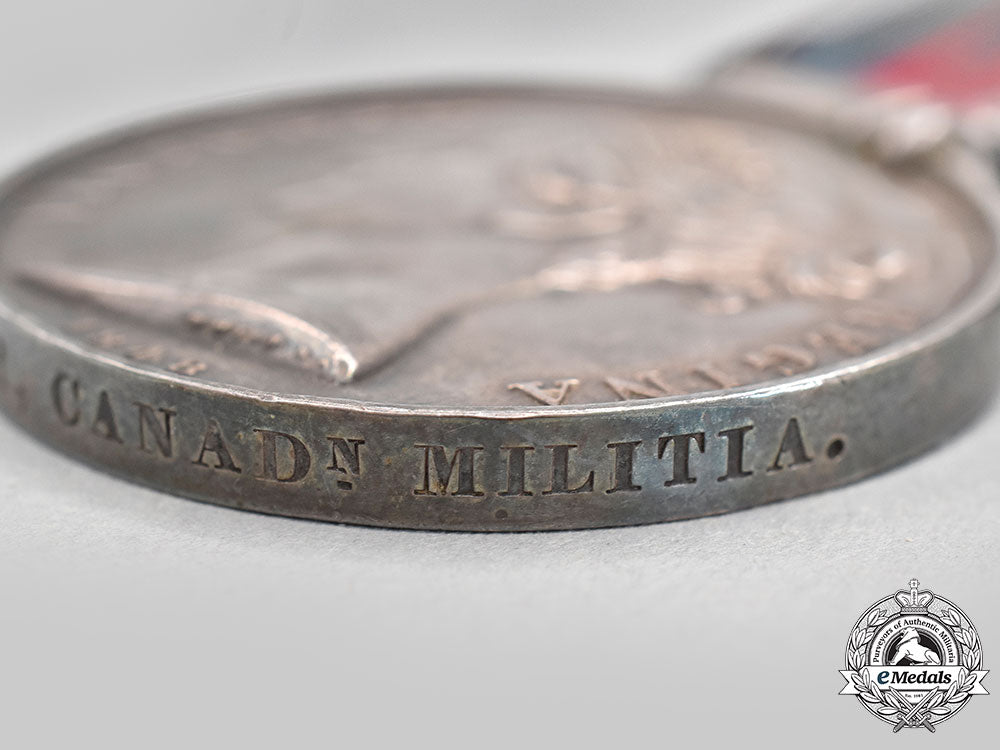
United Kingdom. A General Service Medal With Fort Detroit Clasp To Pte. John Smelser, 1812
United Kingdom. A General Service Medal With Fort Detroit Clasp To Pte. John Smelser, 1812
SKU: ITEM: M0496-1
Current Bid:
Your Max Bid:
Bid History:
Time Remaining:
Couldn't load pickup availability
Shipping Details
Shipping Details
eMedals offers rapid domestic and international shipping. Orders received prior to 12:00pm (EST) will be shipped on the same business day.* Orders placed on Canadian Federal holidays will be dispatched the subsequent business day. Courier tracking numbers are provided for all shipments. All items purchased from eMedals can be returned for a full monetary refund or merchandise credit, providing the criteria presented in our Terms & Conditions are met. *Please note that the addition of a COA may impact dispatch time.
Shipping Details
eMedals offers rapid domestic and international shipping. Orders received prior to 12:00pm (EST) will be shipped on the same business day.* Orders placed on Canadian Federal holidays will be dispatched the subsequent business day. Courier tracking numbers are provided for all shipments. All items purchased from eMedals can be returned for a full monetary refund or merchandise credit, providing the criteria presented in our Terms & Conditions are met. *Please note that the addition of a COA may impact dispatch time.
Description
Description
Military General Service Medal, in silver, naming has been period engraved as J. SMELSER, while CANADN MILITIA. is officially impressed, worn on original ribbon with FORT DETROIT clasp, dark patina small edge bruises, in very fine condition.
Footnote: The War of 1812 occurred over a two-year period between the United States and Great Britain. The origins of this war were largely due to shipping restrictions sparked by the Napoleonic Wars in Europe. The battles took place in Upper Canada, Lower Canada, on the Great Lakes and the Atlantic, and in the United States.
In 1807, tensions exploded with a Maritime confrontation between the USS Chesapeake and the HMS Leopard. This may have been resolved with diplomacy, but instead war broke out. The Americans were motivated by Anglophobia, nationalism and the sentiment that Canada would be an easy territorial gain. War was a form of retaliation against Britain for the economic distress and what was interpreted as British support of the First Nations in resisting American expansion into the West. On June 18 1812, President Madison declared war against Great Britain.
Unbeknownst to the Americans, Upper Canada was better prepared than the Americans expected, largely because of the preparation of Major General Sir Isaac Brock, administrator of Upper Canada. These preparations included reinforcing fortifications, training militia units, and developing alliances with the First Nations.
On July 17, the British went on the offensive, capturing a key American post at Michilimackinac Island without any bloodshed. Meanwhile, an American force led by General William Hull had crossed from Detroit into Canada. When Brock marched men from York to face the invasion, they discovered the Americans had already withdrawn back to Detroit. Brock, backed by the great Shawnee chief Tecumseh, demanded that Hull surrender Detroit. The summons was rejected, and the British battery opened fire on the American fort. Roughly 530 First Nations warriors went across the river at night, and the British followed with 300 regulars, 30 Royal Artillery, 400 militia and 70 Grand River Iroquois in the daytime. On August 16, the forces marched up the road. A white flag appeared at 10am, but the American loss was still considerable: roughly 2188 men, 39 guns, a great deal of shot, flint, powder and supplies along with an unfinished ship later named Detroit. For the loss, General Hull was court martialled and condemned to death, although the sentence was commuted.
The war raged on, with other notable battles taking place at Queenston Heights, Crysler’s Farm, and Lundy Lane. Ultimately, the war was concluded with the Treaty of Ghent which was signed on Christmas Eve on 1814.
The 1812 Medal Roll identifies Private John Smilzer in the York Militia receiving the General Service Medal during the War of 1812. LAC records can be found in Volume 1202, Page 8, Microfilm Reel C-3519, Reference RG8, Item Number: 30136.
Description
Military General Service Medal, in silver, naming has been period engraved as J. SMELSER, while CANADN MILITIA. is officially impressed, worn on original ribbon with FORT DETROIT clasp, dark patina small edge bruises, in very fine condition.
Footnote: The War of 1812 occurred over a two-year period between the United States and Great Britain. The origins of this war were largely due to shipping restrictions sparked by the Napoleonic Wars in Europe. The battles took place in Upper Canada, Lower Canada, on the Great Lakes and the Atlantic, and in the United States.
In 1807, tensions exploded with a Maritime confrontation between the USS Chesapeake and the HMS Leopard. This may have been resolved with diplomacy, but instead war broke out. The Americans were motivated by Anglophobia, nationalism and the sentiment that Canada would be an easy territorial gain. War was a form of retaliation against Britain for the economic distress and what was interpreted as British support of the First Nations in resisting American expansion into the West. On June 18 1812, President Madison declared war against Great Britain.
Unbeknownst to the Americans, Upper Canada was better prepared than the Americans expected, largely because of the preparation of Major General Sir Isaac Brock, administrator of Upper Canada. These preparations included reinforcing fortifications, training militia units, and developing alliances with the First Nations.
On July 17, the British went on the offensive, capturing a key American post at Michilimackinac Island without any bloodshed. Meanwhile, an American force led by General William Hull had crossed from Detroit into Canada. When Brock marched men from York to face the invasion, they discovered the Americans had already withdrawn back to Detroit. Brock, backed by the great Shawnee chief Tecumseh, demanded that Hull surrender Detroit. The summons was rejected, and the British battery opened fire on the American fort. Roughly 530 First Nations warriors went across the river at night, and the British followed with 300 regulars, 30 Royal Artillery, 400 militia and 70 Grand River Iroquois in the daytime. On August 16, the forces marched up the road. A white flag appeared at 10am, but the American loss was still considerable: roughly 2188 men, 39 guns, a great deal of shot, flint, powder and supplies along with an unfinished ship later named Detroit. For the loss, General Hull was court martialled and condemned to death, although the sentence was commuted.
The war raged on, with other notable battles taking place at Queenston Heights, Crysler’s Farm, and Lundy Lane. Ultimately, the war was concluded with the Treaty of Ghent which was signed on Christmas Eve on 1814.
The 1812 Medal Roll identifies Private John Smilzer in the York Militia receiving the General Service Medal during the War of 1812. LAC records can be found in Volume 1202, Page 8, Microfilm Reel C-3519, Reference RG8, Item Number: 30136.
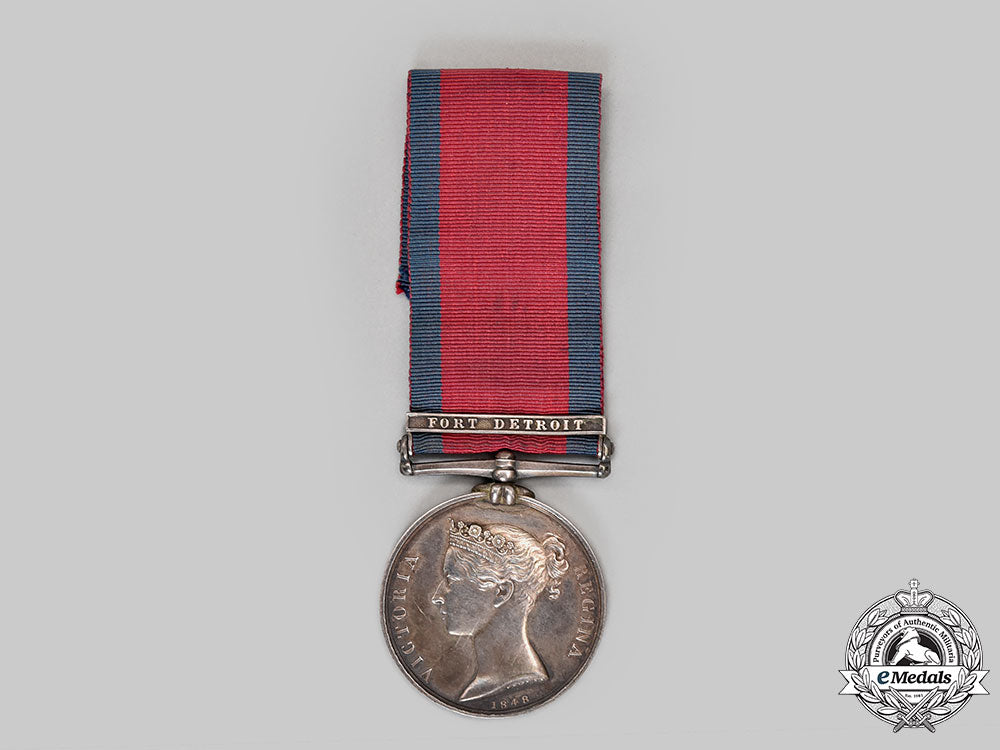
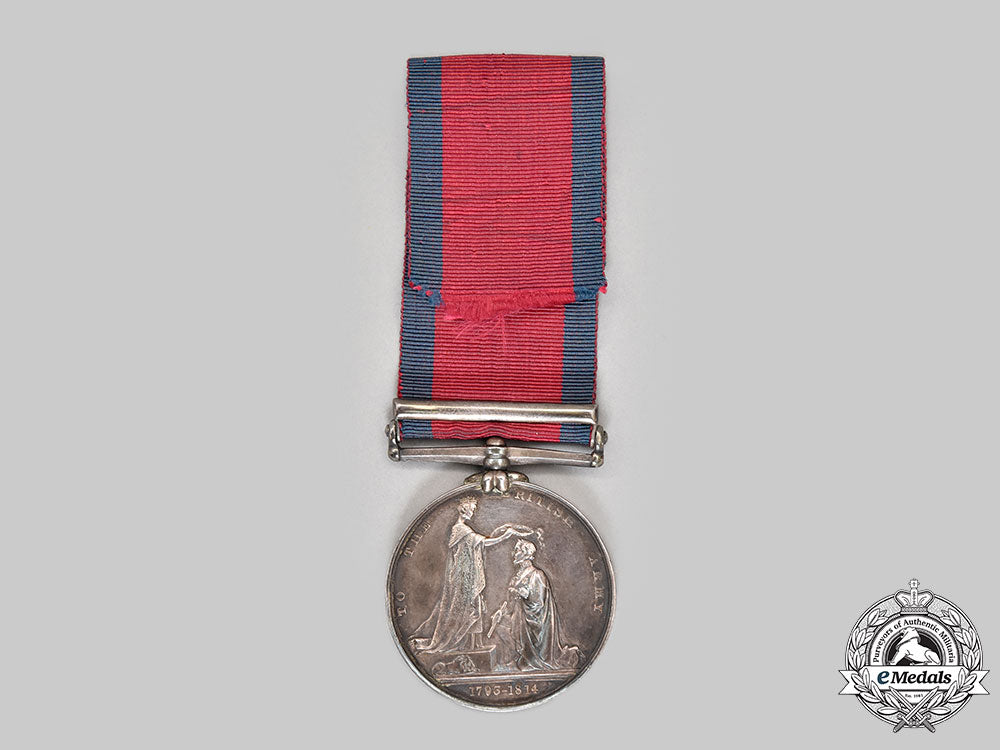
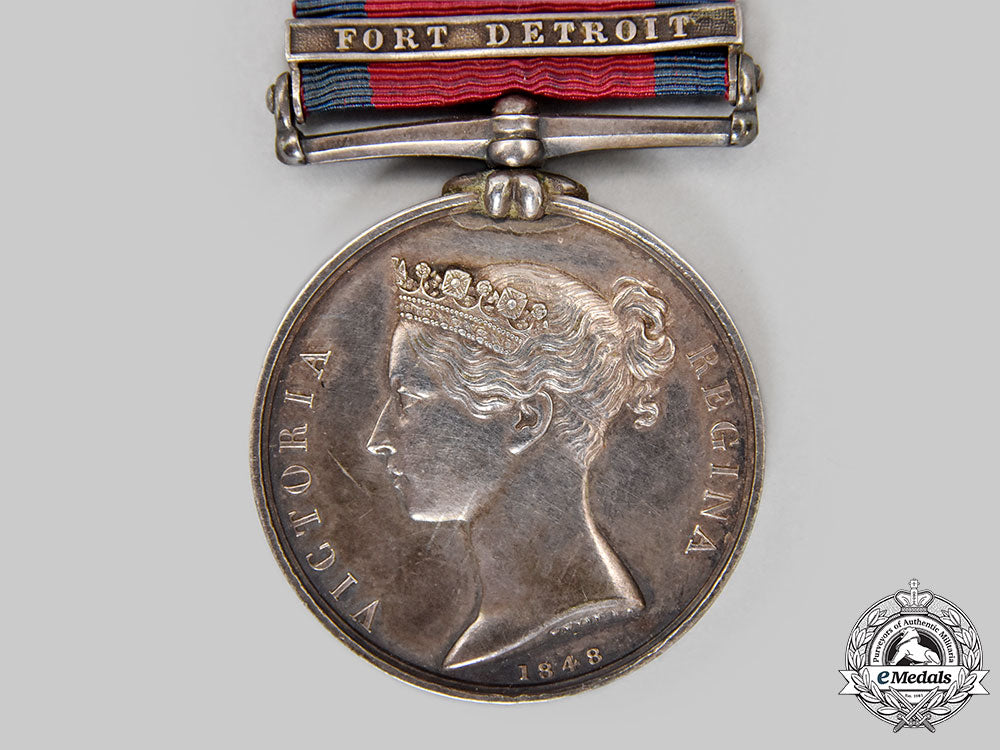
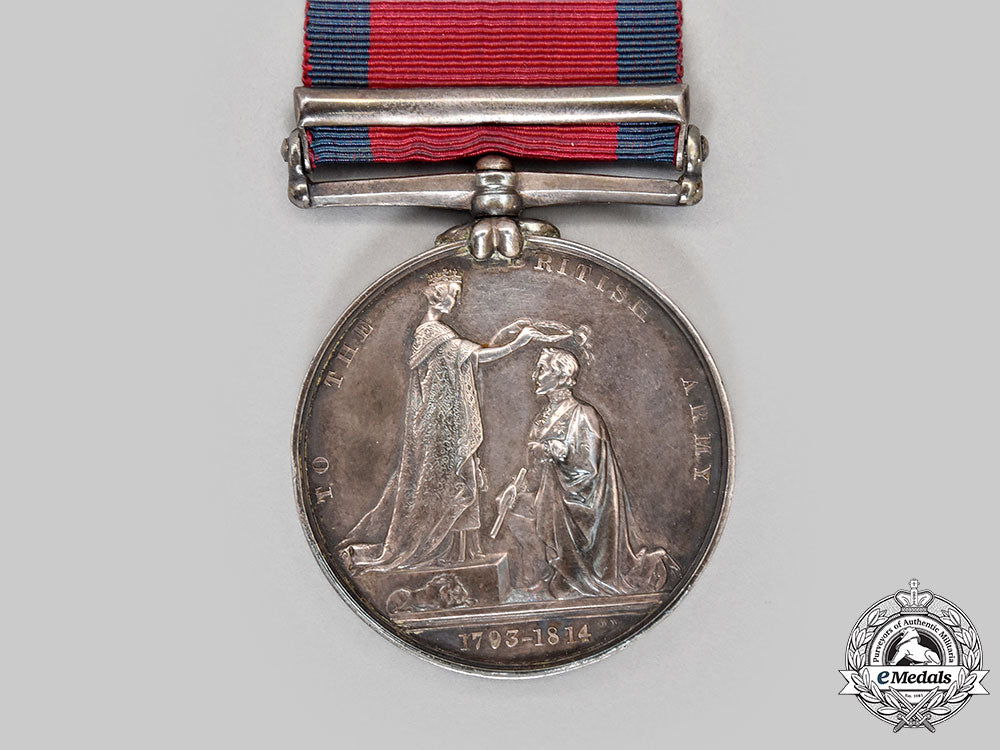
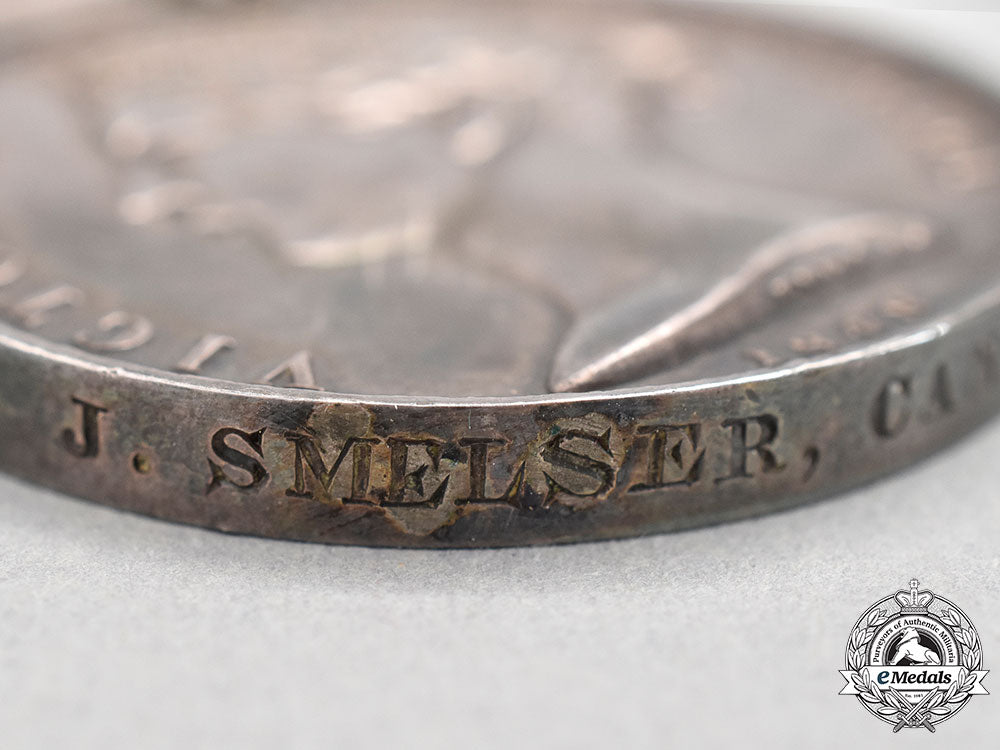
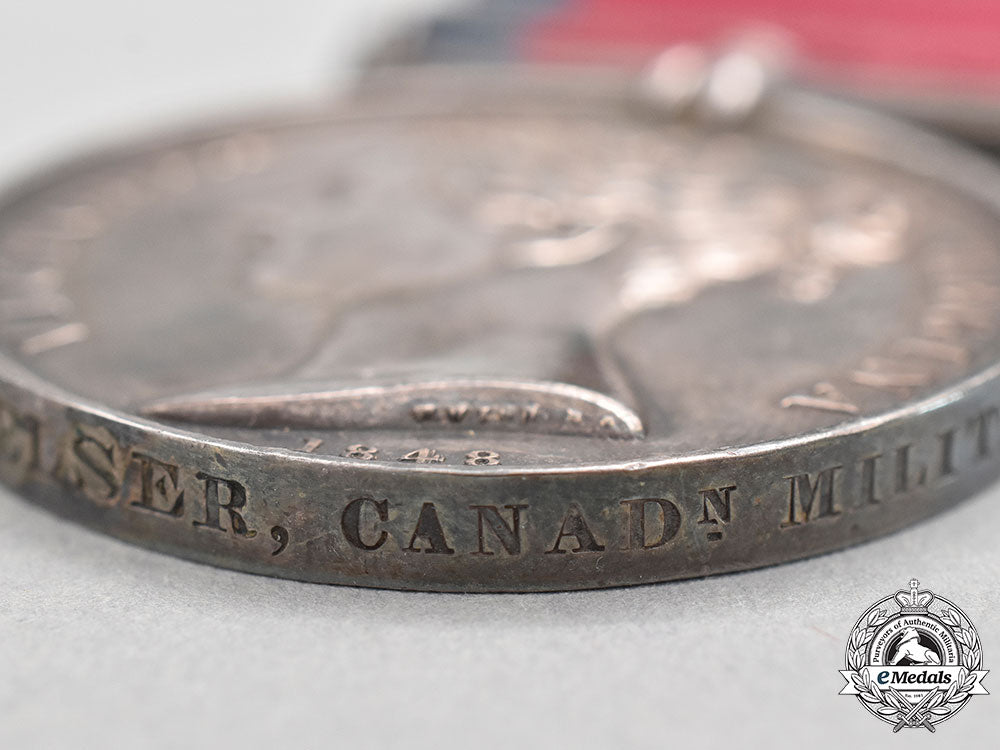
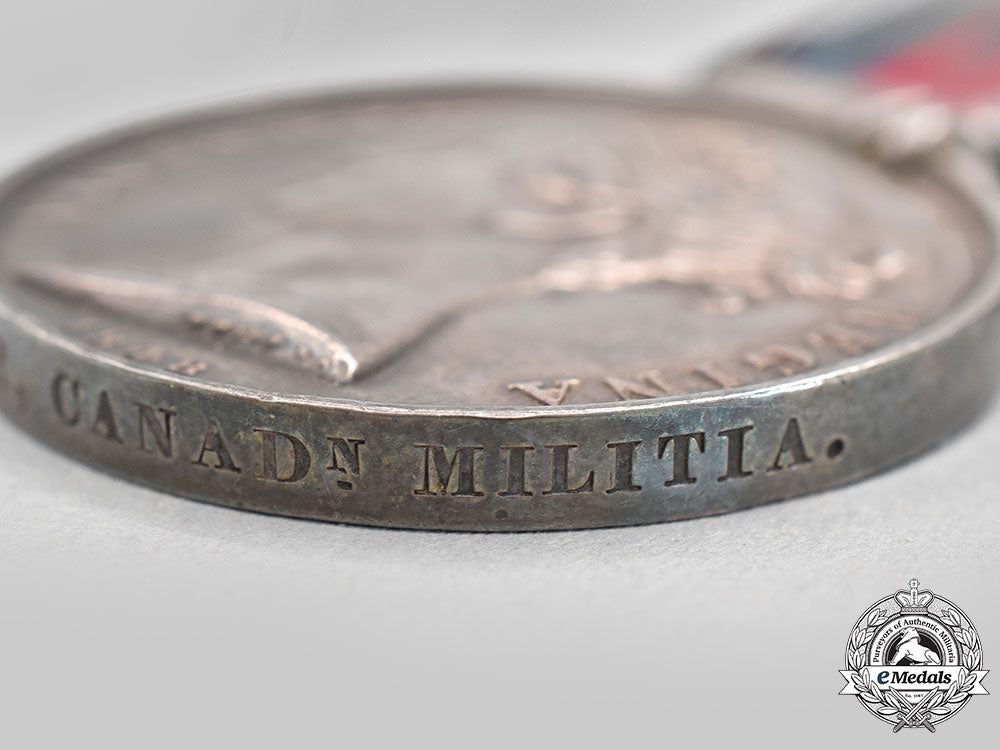
You May Also Like
eMedals Gift Card - $250
eMedals Gift Card - $500
eMedals Gift Card - $25
eMedals Gift Card - $50
Russia, Imperial. An Order of St. Vladimir, IV Class in Gold, Military Division, c.1905
EU24277
-
eMedals Gift Card - $250
Add to CartRegular price $250 USDRegular price USD Sale price $250 USDUnit price / per -
eMedals Gift Card - $500
Add to CartRegular price $500 USDRegular price USD Sale price $500 USDUnit price / per -
eMedals Gift Card - $25
Add to CartRegular price $25 USDRegular price USD Sale price $25 USDUnit price / per -
eMedals Gift Card - $50
Add to CartRegular price $50 USDRegular price USD Sale price $50 USDUnit price / per -
Russia, Imperial. An Order of St. Vladimir, IV Class in Gold, Military Division, c.1905
EU24277
Add to CartRegular price $3,450 USDRegular price $0 USD Sale price $3,450 USDUnit price / per
Do you have a similar item you are interested in selling?
Please complete the form and our client care representatives will contact you.
Sell Item


















